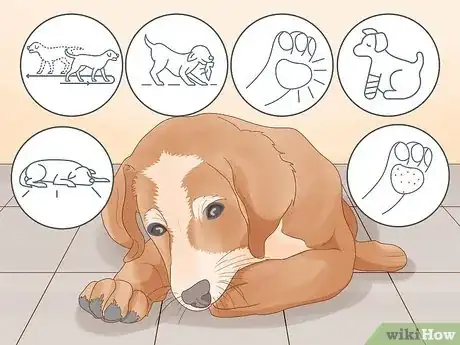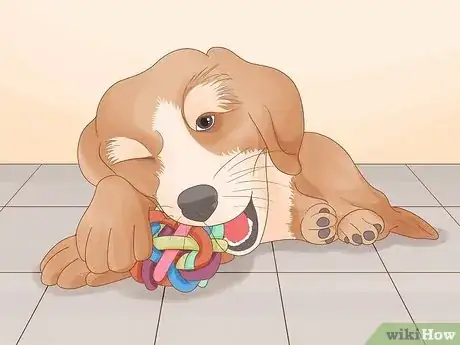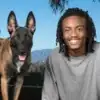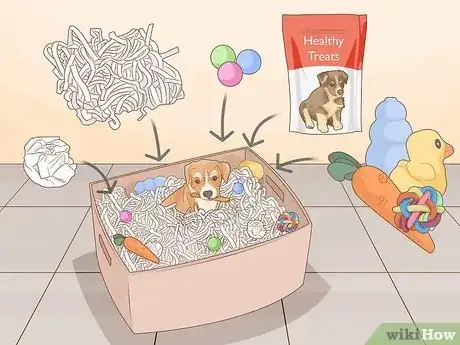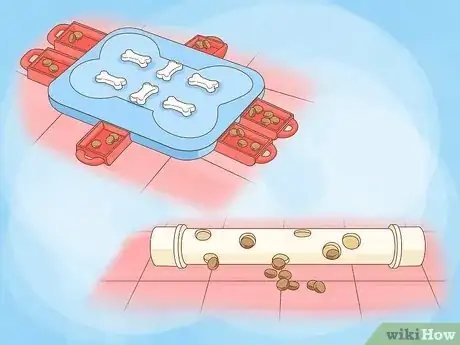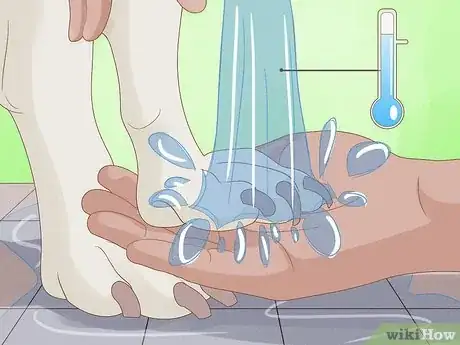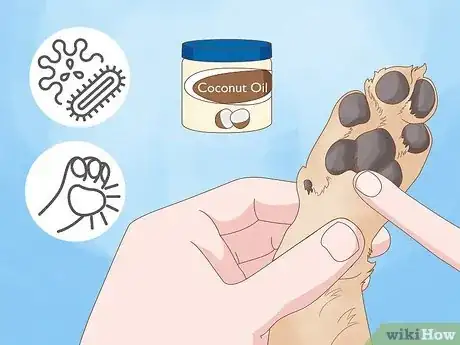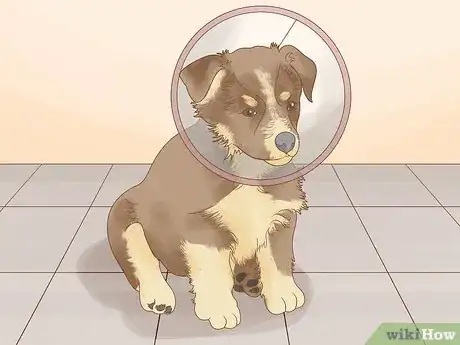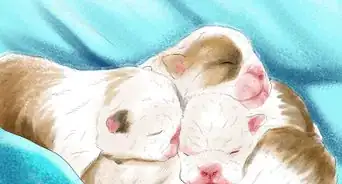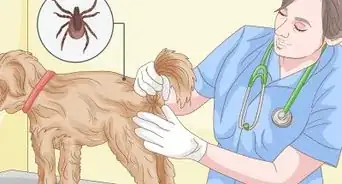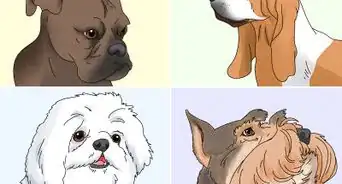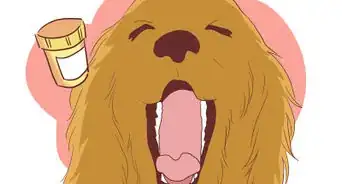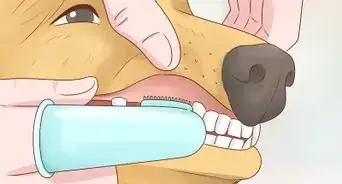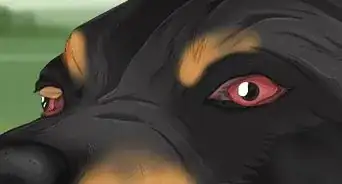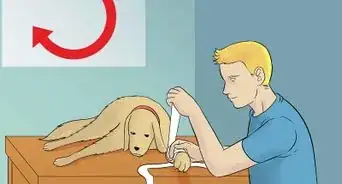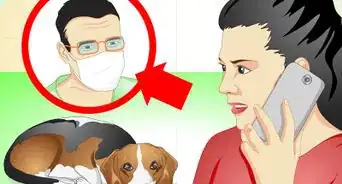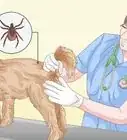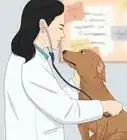This article was written by Indigo Will and by wikiHow staff writer, Aly Rusciano. Indigo Will is a Canine Expert, Trainer, and Founder and Owner of K9-INDIGO® Holistic Dog Training LLC™, a dog training service in Los Angeles, California. Indigo specializes in understanding canine temperament and dispositions to allow canines to reach their full potential. He has studied various methods of training and philosophies to develop a unique, innovative, and result-driven method for canine behavior training.
There are 11 references cited in this article, which can be found at the bottom of the page.
This article has been viewed 25,182 times.
Chewing and licking paws is normal dog behavior, and there are many reasons why your furry friend may be doing this. They could be bored, anxious, or even fighting allergies (and if it’s something more serious, we can help steer you in the right direction). Stopping and redirecting the chewing is a walk in the park as long as you’ve got the right tips and tricks! We’ve got everything you need to keep your pup and its paws happy, so keep reading to learn more.
This article is based on an interview with our canine expert and trainer, Indigo Will, owner of K9-INDIGO® Holistic Dog Training LLC™. Check out the full interview here.
Steps
Expert Q&A
-
QuestionHow can I entice my dog to chew on toys?
 Indigo WillIndigo Will is a Canine Expert, Trainer, and Founder and Owner of K9-INDIGO® Holistic Dog Training LLC™, a dog training service in Los Angeles, California. Indigo specializes in understanding canine temperament and dispositions to allow canines to reach their full potential. He has studied various methods of training and philosophies to develop a unique, innovative, and result-driven method for canine behavior training.
Indigo WillIndigo Will is a Canine Expert, Trainer, and Founder and Owner of K9-INDIGO® Holistic Dog Training LLC™, a dog training service in Los Angeles, California. Indigo specializes in understanding canine temperament and dispositions to allow canines to reach their full potential. He has studied various methods of training and philosophies to develop a unique, innovative, and result-driven method for canine behavior training.
Professional Canine Expert Get a chew toy that's also a treat or that has a treat inside it. Your dog will love chewing the toy and will be more excited about it.
Get a chew toy that's also a treat or that has a treat inside it. Your dog will love chewing the toy and will be more excited about it.
References
- ↑ https://www.akc.org/expert-advice/health/why-does-my-dog-lick-and-chew-his-paws/
- ↑ Indigo Will. Professional Canine Expert. Expert Interview. 8 September 2020.
- ↑ https://www.pdsa.org.uk/pet-help-and-advice/looking-after-your-pet/puppies-dogs/training-dogs-not-to-chew
- ↑ Indigo Will. Professional Canine Expert. Expert Interview. 8 September 2020.
- ↑ https://www.akc.org/expert-advice/nutrition/choosing-the-right-edible-chew-for-your-dog/
- ↑ https://www.pdsa.org.uk/pet-help-and-advice/looking-after-your-pet/puppies-dogs/training-dogs-not-to-chew
- ↑ https://www.pdsa.org.uk/what-we-do/blog/how-to-make-a-destruction-box-for-dogs
- ↑ https://www.petsradar.com/advice/eight-reasons-to-use-a-dog-feeding-puzzle-a-vets-view
- ↑ Indigo Will. Professional Canine Expert. Expert Interview. 8 September 2020.
- ↑ https://www.paws.org/resources/chewing/
- ↑ https://www.akc.org/expert-advice/advice/how-to-tell-if-your-dog-is-stressed/
- ↑ https://www.akc.org/expert-advice/health/why-does-my-dog-lick-and-chew-his-paws/
- ↑ https://www.akcchf.org/canine-health/your-dogs-health/caring-for-your-dog/keeping-dogs-paws-healthy.html
- ↑ https://www.veterinarians.org/dog-licking-paws/
- ↑ https://www.veterinarians.org/dog-licking-paws/
- ↑ https://www.brewstervet.com/sites/site-1762/documents/How%20to%20prevent%20licking%20or%20chewing%20at%20the%20skin.pdf
- ↑ https://www.brewstervet.com/sites/site-1762/documents/How%20to%20prevent%20licking%20or%20chewing%20at%20the%20skin.pdf
